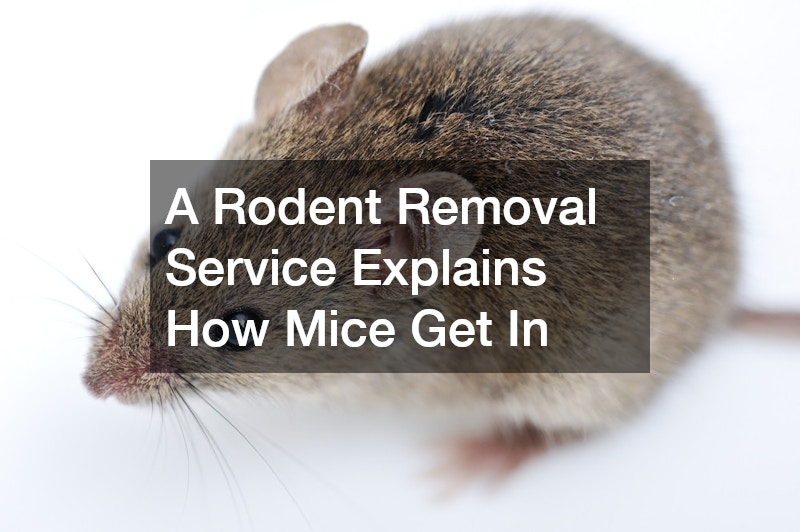In this article, we delve into the intriguing world of how mice find their way into homes. A professional rodent removal service shares insights into entry points, prevention methods, and the behavior of these small pests. With this knowledge, homeowners can take proactive steps to protect their property from these unwanted invaders.
Signs You Have Mice in Your Home
Mice Droppings and Gnaw Marks
Mice droppings are small, dark, and pellet-shaped, often found in areas like kitchen cupboards and along baseboards. These droppings are not only unsightly but also a health hazard, carrying diseases that can contaminate food and surfaces. Additionally, gnaw marks on furniture, wiring, and other materials indicate that mice are actively foraging and nesting nearby.
Recognizing these signs early is crucial for implementing effective control measures. Mice have strong incisors that continuously grow, making gnawing a necessary behavior to keep them trimmed. This behavior leads to significant property damage over time, as they chew through wood, plastic, and even electrical wiring.
Scratching Noises and Unusual Pet Behavior
Scratching noises coming from walls, ceilings, or floors often indicate the presence of mice. These sounds are most noticeable at night when mice are most active, foraging for food and nesting materials. Animals such as cats and dogs can be sensitive to these noises, showcasing heightened alertness or agitation.
Homeowners may notice pets pawing at walls or sniffing around areas where mice are hiding. This behavior can serve as an early warning sign, prompting closer inspection of possible infestation sites. Since mice are nocturnal, pets may be more aware of their presence before humans notice any signs.
Unpleasant Odors and Nesting Materials
Nests made from shredded paper, fabric, or insulation are common in hidden corners or attics. Finding these materials indicates active mice colonies that require immediate attention. Alongside nests, mice excrete a strong, musky odor that is unmistakably associated with their presence.
This odor can linger and permeate through walls and fabrics in a home, creating an unpleasant environment. The scent not only serves as a nuisance to residents but also attracts more mice. Understanding the implications of these odors can help in identifying infestation levels and determining the need for remediation.
Common Entry Points for Mice
Cracks and Holes in Walls
Even small openings in walls serve as gateways for mice due to their flexible bodies. Mice can squeeze through spaces as small as a dime, making thorough inspections essential for homeowners. Once inside, they exploit these passages to move freely around the property.
Seasonal changes can exacerbate this issue, as materials expand and contract, revealing new gaps. Homeowners should regularly inspect foundations, walls, and corners for such vulnerabilities. Sealing these potential entry points with appropriate materials like steel wool or caulk is critical in keeping mice out.
Poorly Sealed Doors and Windows
Doors and windows serve as primary access points for mice if not properly sealed. Weatherstripping and threshold gaps can develop over time, allowing easy entry into the house. Regular maintenance of window frames and door seals can minimize these risks significantly.
Replacing old materials and ensuring tight seals add an effective barrier against mice entry. Homeowners should pay special attention to parts of the home that are less frequently used, as these areas might not receive regular upkeep. Furthermore, installing metal kick plates can bolster protection against gnawing at door edges.
Gaps Around Utility Pipes and Vents
Pipes and vents that enter a building often have small gaps allowing mice to squeeze through. These spaces are typically overlooked but can act as hidden highways for these agile rodents. Homeowners must inspect and seal these areas adequately to prevent mice access.
Simple fixes include using metal mesh or expanding foam to fill these voids effectively. Such proactive measures can prevent larger infestations by cutting off potential entry routes. Even minor gaps can grant mice entry, underscoring the need for diligent maintenance checks.
By understanding the signs of infestation and the common pathways mice use to invade homes, property owners can better protect their living spaces. Implementing preventive measures and regular inspections can significantly reduce the risk of a mouse invasion. A concerted effort in addressing these vulnerabilities ensures a safer, healthier environment.
.

